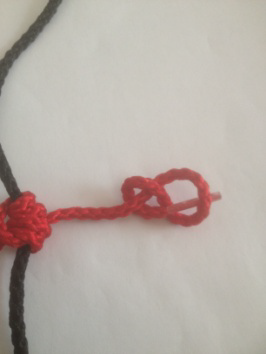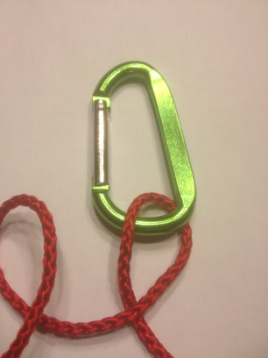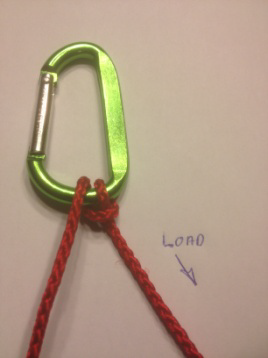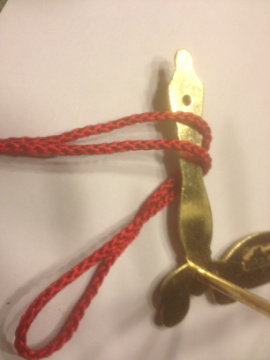Blake’s Hitch
The Blake’s Hitch is a friction knot popular with arborists for ascending and descending on ropes. The name derives from Jason Blake who is credited with describing the knot to other arborists in 1994. This hitch has the advantage that it can be tied with the end of a rope instead of requiring a Prusik Loop. A “stopper knot” such as the Figure Eight is recommended to be tied with tag end after the knot is drawn up
- Wrap line four times around other rope, working from bottom to top.


- Leave room in 2nd wrap to accommodate tag end of rope.

- Run tag end down to and over standing line, behind static rope and out through 2nd wrap.

- Tighten knot and finish with a stopper knot (Figure Eight) at the end of the line.


Klemheist Knot
The Klemheist Knot is tied by making a Prusik Loop with line or rope that is no more than 1/2 the diameter of the main, static rope. The resulting friction knot loop can then slide up the rope but grips when subjected to load. It can also slide down a line by gripping the knot itself with no load applied
Place a loop consisting of cordage no more than 1/2 the diameter of the main line behind the static line.

Make a wrap around the static line with the loop on the right.

Repeat two more times working from bottom to top.

Feed left hand loop through loop on right.

Pull left hand loop back over to left side of static line and pull down hard to set the knot.

Grasp entire knot and slide up the static line. Load and grip the knot to the static line with weight to the loop.

Munter Hitch
The Munter Hitch provides a method for belaying and rappelling without a belay/rappel device. This is an important knot for climbers to know. It works best in large pear shaped carabiners and should only be used with a locking carabiner. When belaying with the Munter Hitch be sure that the strand of rope carrying the load is next to the spine of the carabiner. Set this knot up correctly, because someone’s life is on the other end of the rope! This knot can cause kinks or twists in the rope.
- Make a loop in the rope and slip the loop into a locking carabiner. Form a second loop with the line crossing opposite the first loop.


- Slip second loop into the carabiner and lock carabiner.

- Make sure the strand carrying the load is next to the spine of the carabiner.

Pile Hitch
The Pile Knot is a simple knot that is used to attach a rope to a post or other object. When the end of the post is available, the knot can be tied with a loop in the rope, without access to the end of the rope.
- Double end of a line into a loop and wrap around post or object from front to back.

- Cross over standing lines and slide open end of loop over top of post.

- Pull tight.

Slipped Buntline
The Slipped Buntline is a quick release knot, similar to the Mooring Hitch. It will hold fast under load yet comes undone quickly with a firm pull on the free end.
Wrap working end around object and run end behind loop just created.

Bring working end back to front of knot and grasp in middle of working part.

Feed bight just formed between front and back lines of original loop.

Carefully tighten the knot. To release the knot, pull on tag end.

